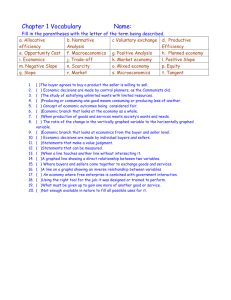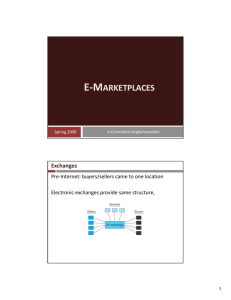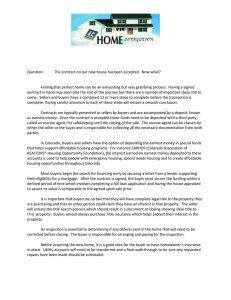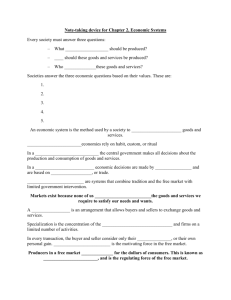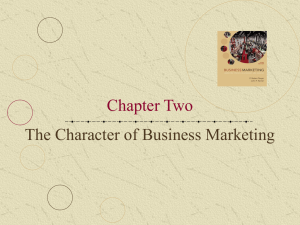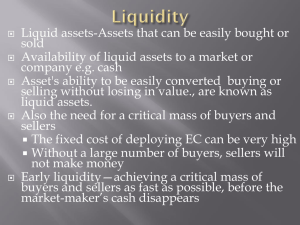Summary Verbal Instructions DA tax on buyer
advertisement
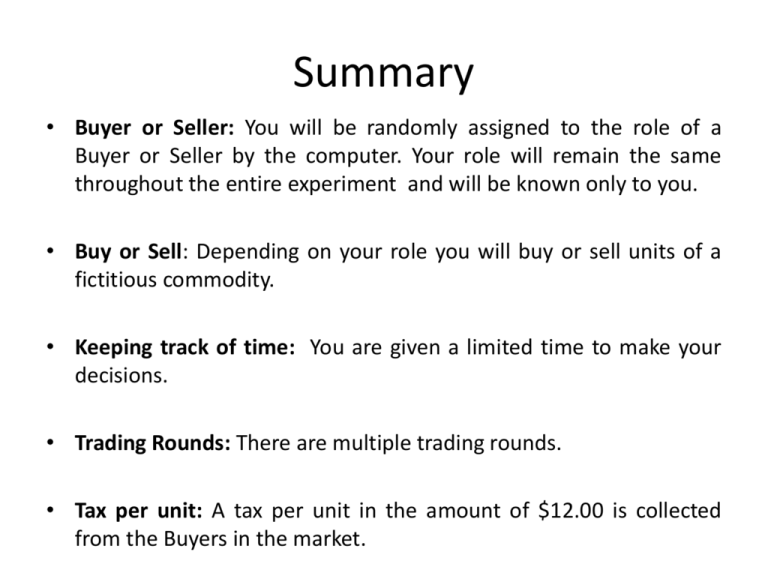
Summary • Buyer or Seller: You will be randomly assigned to the role of a Buyer or Seller by the computer. Your role will remain the same throughout the entire experiment and will be known only to you. • Buy or Sell: Depending on your role you will buy or sell units of a fictitious commodity. • Keeping track of time: You are given a limited time to make your decisions. • Trading Rounds: There are multiple trading rounds. • Tax per unit: A tax per unit in the amount of $12.00 is collected from the Buyers in the market. What does a Seller do in this experiment? • What is known to Sellers? Sellers will know their costs per unit and the number of units they have available to sell. This is private information. • What decisions do Sellers make? Sellers can sell units in the market in two ways. One is by posting a price (Ask) and waiting for Buyers to accept this price. The second way is by accepting a price (Bid) posted by Buyers. • How do Sellers make money in this experiment? By selling units at prices greater than their costs per unit. • An Ask price can be any price between $0 and $100. • Note: Once trading begins, your screen will show all outstanding Bid and Ask prices in the market. What does a Buyer do in this experiment? • What is known to Buyers? Buyers know their values per unit minus the tax per unit. This is private information. • What decisions do Buyers make? Buyers can buy units in the market in two ways. One is by posting a price (Bid) and waiting for Sellers to accept this price. The second way is by accepting a price (Ask) posted by Sellers. • How do Buyers make money in this experiment? By buying units at prices less than your values minus the tax per unit. • A Bid price can be any price between $0 and $100. • Note: Once trading begins, your screen will show all outstanding Bid and Ask prices in the market.




